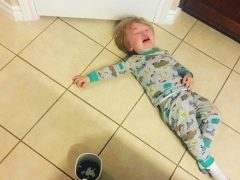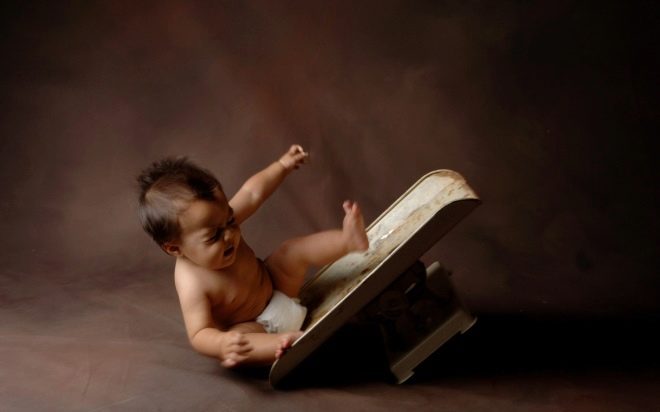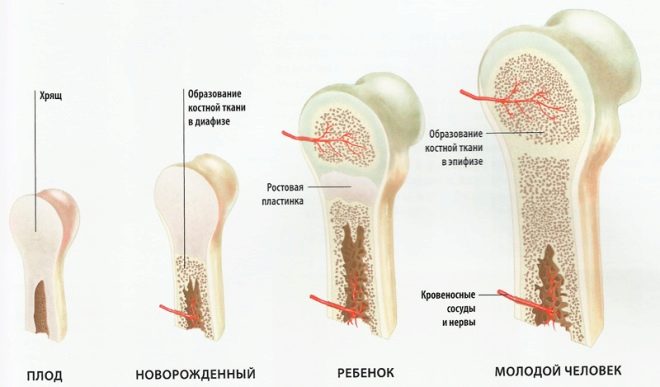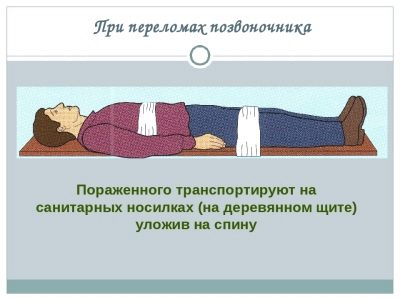What if the baby fell on his back?
As soon as children begin to learn about the world, they immediately begin to fall. Children's traumatologists who have solid work experience say that during the period of childhood from birth to adulthood, the average child has every chance to contact the emergency room up to 40 times. Most of the "landings" are, according to the doctors, on the head, hands and back. About what to do if the child fell on his back, we will tell in this article.
Why do children fall and how serious is it?
The reasons for which small children fall are obvious - instability of gait, displaced center of gravity, clumsiness and inability to quickly coordinate the movements of all parts of the body. Older children - kindergarteners and schoolchildren fall as a result of hasty movements, collisions with obstacles, improper exercise. The most common places for infants to fall - a sofa, changing table and ... flat place. Children from 2 years and older usually fall from a greater height - from a swing, from the Swedish wall, from a slide.
Nature took care of the little ones - she created quite reliable compensatory mechanisms to protect them. The moving bones of the skull of infants, the spring is nothing more than an attempt by nature to protect the brain in the event of a fall. But if the child is no longer 5 months or one and a half years old, but more, if he fell and hit the backrest, then there is no need to rely on the defenses of nature - the children's bone tissue, although more elastic, is weakly protected by the spine. The only "gift" of nature for the protection of children's vertebrae - more than in adults, the amount of cerebrospinal fluid, which serves as a shock absorber.
I am glad that up to 85-90% of falls on the back are completed only with bruises, fear of the child and his parents. However, in 10-15% of cases there is an injury, and the task of the parents is to understand what is happening as soon as possible from the moment of the fall in order to know how to give first aid and what to do next.
What to look for?
First estimate the height. If the fall occurred from the couch, most likely, the child screams solemnly solely from fear and surprise. Such a height does not represent a serious danger to the health of the child. Flying from a changing table or falling from a swing or a slide can be much more dangerous. Quickly assess the situation. If the child fell and immediately rose, most likely nothing terrible happened to him. If the baby was quickly calmed down, and he does not show any abnormal behavior and deterioration of health, the fall is unlikely to have negative consequences.
If a child has fallen and cannot rise, if during a fall he has hit the back of his head, his spine, he has caught his breath, he cannot move his limbs, most likely, the baby has a serious injury. Need urgent medical attention.
How to recognize the injury?
As already mentioned, back injuries when falling on it happen infrequently. This usually happens if the child fell not on a flat surface, but on some object. The most dangerous if the contact of the object had in the area of the vertebrae. When falling from a low height, a swelling in the area of a traumatic impact may occur, and severe pain is also a sign of a bruise.
A spinal fracture appears almost the same - a lump may form on an injured vertebra in the thoracic region of the spine, in the lumbar or sacral region.Additional symptoms include painful shooting in the lumbar region or scapula, dizziness, severe headache, inability to move the limbs, loss of consciousness after a fall.
It is almost impossible to distinguish a bruise from a crack or a spinal fracture at the site of injury. Therefore, in any case, it is necessary to properly provide first aid and wait for the arrival of the Ambulance.
First aid
The basic principle of first aid for adults when a child falls on their back is not to fuss. Unnecessary movement is contraindicated. If a child has a fracture, attempts to move it, lift it, plant it, put it on its feet, move it somewhere can cause pinched disks, spinal cord, shrapnel injuries. The child should be as motionless as possible. Call the ambulance, fix the child in the position in which he was after the fall, slightly lift the legs, putting something under them - a roller, a bag, a soft toy that is on hand.
Something cold can be applied to the injury site, but not a piece of ice. With a strong pain syndrome, the child should be given a dose of an anesthetic - in the upper thigh into the muscle in front. It is not necessary to turn the child on the stomach or on its side to make a shot in the ass. Tablets should also be excluded, since the swallowing reflex may be disturbed as a result of the injury. Carrying a child into the ambulance carriage is required if there are 3-4 adults, this should be done as carefully as possible, without shaking or uneven movements.
Caution will require transportation. Only doctors in the hospital using X-ray technology and MRI can find out the exact consequences of falling on his back and prescribe the correct treatment and rehabilitation.
Heads Drop
This combination runs the risk of not only getting a back injury, but also a head injury, which, in turn, can be closed, open and combined. Signs of a cranial injury are immediately difficult to establish, usually they are already engaged in the hospital where the child is delivered with suspected spinal injury. If, after falling, the child rose and went, and there was no “Ambulance”, the mother needs to be very careful - during the day you need to pay attention to the child’s complaints and his behavior.
Unreasonable monotonous whining crying, lethargy, apathy, different sizes of pupils, nausea, vomiting, dizziness, loss of consciousness, convulsions, speech disorder, confusion - all these are reasons for early hospitalization.
First aid will be that the child must be laid on its side so that during spontaneous vomiting the vomit does not get into the respiratory organs and does not cause asphyxiation, cause an “emergency room”. The legs and head of the child should be at the same level.
findings
One may urge parents to monitor the children more closely, but there are no fewer falls from these appeals. Therefore, it is important to be always ready to assist. Carry a small bottle of ammonia and a bag of dry ice in your purse. This can come in handy at the earliest possible stage after injury.
Parents, especially those with many children, gradually learn to relate to children's falls philosophically. If there are no dangerous symptoms, but there is a fear, then everything is in order. Fall is an indispensable stage of maturation, which all people without exception go through. Fall is an experience. Next time, the baby will be more cautious to ride down the hill or to listen to mom's advice on the safe use of swings.
It is difficult to call such parents as heartless - they simply have a wealth of experience not to panic, not to twitch doctors over trifles, but in the case of a serious they can always quickly and competently come to the rescue.
How to avoid falling of the child from height, look in the following video.


















